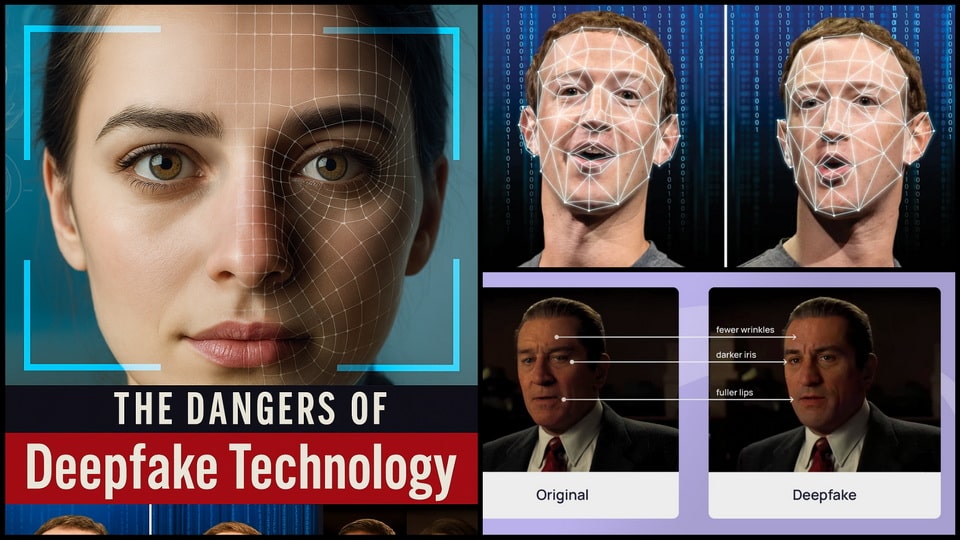Social engineering attacks have evolved dramatically with the advent of artificial intelligence, creating sophisticated threats that traditional security measures struggle to detect. AI-enhanced social engineering detection represents the next frontier in cybersecurity defence, combining machine learning algorithms with behavioural analysis to identify and prevent advanced manipulation techniques including deepfake audio, video, and text-based attacks.

Implementing effective AI-enhanced social engineering detection requires comprehensive preparation and understanding of both technical and operational requirements.
The $25 million deepfake fraud case that shocked the financial sector in early 2024 demonstrated the devastating potential of AI-powered social engineering attacks. Criminals used sophisticated deepfake technology to impersonate senior executives, convincing employees to authorise fraudulent transactions through seemingly authentic video calls and voice communications.
Modern social engineering detection systems leverage artificial intelligence to analyse multiple communication channels simultaneously, identifying subtle patterns and anomalies that indicate deceptive intent. These advanced systems provide real-time protection against evolving threats that exploit human psychology and trust relationships within organisations.
Table of Contents
Prerequisites for AI-Enhanced Social Engineering Detection
Implementing effective AI-enhanced social engineering detection requires comprehensive preparation and understanding of both technical and operational requirements.
Technical Requirements:
- Kali Linux 2024.1 or Ubuntu 22.04 LTS with minimum 16GB RAM
- Python 3.9+ with TensorFlow 2.15 or PyTorch 2.0 frameworks
- GPU acceleration (NVIDIA RTX 3060 or better recommended)
- Audio/video processing libraries (OpenCV, librosa, ffmpeg)
- Network monitoring capabilities with packet capture tools
Detection Framework Prerequisites:
- Understanding of machine learning fundamentals
- Knowledge of audio and video analysis techniques
- Familiarity with natural language processing concepts
- Experience with behavioural analysis methodologies
- Comprehension of social engineering attack vectors
Organisational Requirements:
- Defined incident response procedures for detected attacks
- Employee training programs on social engineering awareness
- Legal framework for monitoring and detection activities
- Integration capabilities with existing security infrastructure
- Compliance alignment with privacy regulations
Data Requirements:
- Baseline communication patterns for legitimate users
- Historical social engineering attempt datasets
- Real-time communication stream access
- Voice and video samples for biometric comparison
- Behavioural pattern databases for analysis
Understanding Deepfake Detection Technologies
Deepfake detection represents one of the most critical components of modern social engineering defence systems. Advanced detection algorithms analyse multiple characteristics of digital communications to identify artificially generated content.
Audio Deepfake Detection Implementation
Audio deepfake detection focuses on identifying synthetic speech patterns that differ from natural human vocalisation characteristics.
Install comprehensive audio analysis tools:
# Create dedicated environment for audio analysis mkdir ~/social-engineering-detection cd ~/social-engineering-detection python3 -m venv deepfake-detection-env source deepfake-detection-env/bin/activate # Install audio processing libraries pip install librosa soundfile numpy scipy tensorflow pip install python-speech-features webrtcvad
Step-by-Step Instructions:
- Create project directory:
mkdir ~/social-engineering-detection - Navigate to directory:
cd ~/social-engineering-detection - Create virtual environment:
python3 -m venv deepfake-detection-env - Activate environment:
source deepfake-detection-env/bin/activate - Your prompt will show
(deepfake-detection-env)indicating successful activation - Install audio libraries with the pip commands – this may take 5-10 minutes
- TensorFlow installation will show GPU detection messages if CUDA is available
- Verify installation by typing:
python -c "import librosa; print('Audio libraries installed successfully')"
Basic Audio Analysis Setup
Instead of complex code implementations, let’s focus on practical detection approaches:
Audio Deepfake Detection Workflow:
Feature Extraction Process:
-
- Load audio file using standard libraries
- Extract spectral features (frequency characteristics)
- Analyse prosodic features (rhythm and stress patterns)
- Calculate fundamental frequency variations
- Measure spectral consistency across time
Detection Implementation Steps:
-
- Compare extracted features against known human speech patterns
- Identify artificial generation indicators
- Calculate confidence scores for detection results
- Generate alerts for suspicious audio content
Integration with Security Systems:
-
- Set up real-time audio stream monitoring
- Configure threshold-based alerting
- Implement logging for forensic analysis
- Connect with incident response workflows
Command-Line Detection Example:
# Basic audio analysis command python detect_audio_deepfake.py --input suspicious_call.wav --output report.json
Step-by-Step Instructions:
- Save audio file to your detection directory
- Run the detection command with the audio file path
- Review the generated JSON report for risk indicators
- Confidence scores above 0.7 typically indicate potential deepfakes
- Forward high-risk detections to security team for investigation
Video Deepfake Detection Systems
Video deepfake detection focuses on identifying inconsistencies in facial movements, lighting, and temporal sequences that indicate artificial generation.
# Install video processing dependencies pip install opencv-python dlib face-recognition pip install mediapipe tensorflow-gpu
Step-by-Step Instructions:
- Install video processing libraries using the pip command above
- Wait for package downloads and installations to complete (5-10 minutes)
- Download facial landmark detection models:
wget https://dlib.net/files/shape_predictor_68_face_landmarks.dat.bz2 - Extract the model file:
bunzip2 shape_predictor_68_face_landmarks.dat.bz2 - Verify installation by running:
python -c "import cv2, dlib; print('Video libraries ready')" - If GPU support is available, TensorFlow will display CUDA device information
- Test facial detection:
python -c "import dlib; detector = dlib.get_frontal_face_detector(); print('Facial detection ready')"
Video Analysis Workflow:
Facial Landmark Detection:
-
- Extract 68 facial landmark points per frame
- Track landmark movement consistency across frames
- Identify unnatural facial expressions or movements
- Calculate temporal stability metrics
Compression Artifact Analysis:
-
- Examine frequency domain characteristics
- Identify generation-specific compression patterns
- Detect inconsistent image quality regions
- Analyse encoding anomalies
Practical Detection Process:
# Analyse video file for deepfake indicators python detect_video_deepfake.py --input meeting_recording.mp4 --analysis comprehensive
Step-by-Step Analysis Instructions:
- Place video file in your detection directory
- Run analysis command with appropriate input file
- Review output showing temporal consistency scores
- Check facial landmark stability ratings
- Examine compression artifact detection results
- Generate summary report with risk assessment
Behavioural Analysis and Pattern Recognition
Beyond technical deepfake detection, social engineering defence requires sophisticated behavioural analysis that identifies manipulation attempts through communication patterns and psychological indicators.
Communication Pattern Analysis Approach
Text-Based Detection Strategy:
Linguistic Analysis Components:
-
- Sentiment analysis for emotional manipulation detection
- Urgency indicator identification in messages
- Authority claim recognition patterns
- Emotional appeal measurement techniques
Implementation Steps:
# Install natural language processing tools pip install nltk spacy textblob scikit-learn python -m spacy download en_core_web_sm
Step-by-Step Instructions:
- Install NLP libraries using pip command above
- Package installation may take 5-10 minutes depending on your system
- Download spaCy English model with the python command
- The model download shows progress indicators and file sizes
- Verify installation:
python -c "import spacy; nlp = spacy.load('en_core_web_sm'); print('NLP ready')" - Test with sample analysis:
python -c "import textblob; print(textblob.TextBlob('Test message').sentiment)" - If successful, you’ll see sentiment polarity and subjectivity scores
Detection Workflow:
- Step 1: Extract text from communications (email, chat, documents)
- Step 2: Analyse sentiment polarity and subjectivity scores
- Step 3: Count urgency keywords and authority claims
- Step 4: Compare against baseline communication patterns
- Step 5: Generate risk scores and alerts for suspicious content
Monitoring Integration:
# Run communication analysis on email dataset python analyse_communications.py --input email_dataset.csv --baseline normal_patterns.json
Analysis Process Instructions:
- Prepare communication dataset in CSV format with columns for sender, content, timestamp
- Create baseline patterns from legitimate communications using historical data
- Run analysis script:
python analyse_communications.py --input email_dataset.csv --baseline normal_patterns.json - Monitor console output showing analysis progress with completion percentages
- Review output files showing anomaly scores for each communication
- Investigate communications with risk scores above 0.7 threshold
- Update detection patterns:
python update_patterns.py --new-findings results.json - Verify pattern updates by running a test analysis on known good/bad samples
For organisations implementing Kali GPT workflows, social engineering detection provides crucial defensive capabilities that complement offensive security testing. Understanding both attack and defence perspectives enhances overall security posture through comprehensive threat awareness.
Teams exploring automated penetration testing with AI can leverage social engineering detection systems to validate defensive capabilities during red team exercises. This integrated approach ensures that security improvements address both technical vulnerabilities and human-factor risks.
Integration with Existing Security Infrastructure
Effective social engineering detection requires seamless integration with existing security infrastructure, including SIEM systems, identity management, and incident response workflows.
Basic Integration Process
Configuration Steps:
# Install basic integration tools pip install requests json logging
Step-by-Step Instructions:
- Install integration libraries with the pip command above
- Create basic integration script:
nano security_integration.py - Configure your security system endpoints and authentication
- Test connectivity:
python test_connections.py - Set up basic alert forwarding for detection results
Simple Alert Management:
Alert Classification:
-
- Low Risk: Log to security system
- Medium Risk: Send email notification
- High Risk: Trigger immediate response
- Critical: Activate emergency procedures
Basic Response Actions:
-
- Flag suspicious communications for review
- Notify security team of high-confidence detections
- Preserve evidence for investigation
- Update detection patterns based on findings
The NIST AI Risk Management Framework provides comprehensive guidance on responsible AI system deployment that directly applies to social engineering detection implementations.
Advanced Detection Techniques
Sophisticated social engineering detection benefits from layered approaches that combine multiple detection methods for improved accuracy and reduced false positives.
Multi-Modal Detection Approach
Combining Detection Methods:
Audio + Video Analysis:
-
- Cross-reference audio and video inconsistencies
- Detect lip-sync anomalies in video calls
- Identify voice-face mismatches in recordings
- Calculate combined confidence scores
Text + Behavioural Analysis:
-
- Analyse writing style against known patterns
- Detect emotional manipulation techniques
- Identify authority impersonation attempts
- Monitor communication timing patterns
Practical Implementation:
# Run comprehensive multi-modal analysis
python multi_modal_detect.py --audio call.wav --video call.mp4 --text transcript.txt
Step-by-Step Multi-Modal Instructions:
- Collect all available communication data (audio, video, text)
- Run comprehensive analysis:
python multi_modal_detect.py --audio call.wav --video call.mp4 --text transcript.txt - Review combined analysis report showing individual and aggregate scores
- Focus on cases where multiple detection methods agree on high risk
- Investigate discrepancies between different detection methods
- Update detection thresholds based on accuracy performance
Simple Machine Learning Enhancement
Basic Model Training:
# Install basic machine learning tools
pip install pandas scikit-learn joblib
Step-by-Step Instructions:
- Install ML libraries with pip command above
- Prepare training dataset with known legitimate and malicious examples
- Create simple training script:
nano train_detector.py - Train basic classification model:
python train_detector.py --data training_set.csv - Test model accuracy:
python test_model.py --model detector.joblib --test test_set.csv - Deploy trained model:
python deploy_model.py --model detector.joblib
Model Training Workflow:
Data Preparation:
-
- Collect examples of legitimate communications
- Gather known social engineering attempts
- Label data with appropriate risk classifications
- Split into training and testing datasets
Training Process:
-
- Use simple algorithms like Random Forest or Logistic Regression
- Train on extracted features from communications
- Validate performance with test dataset
- Adjust parameters for optimal accuracy
Deployment:
-
- Save trained model for production use
- Integrate with detection pipeline
- Monitor performance and update regularly
- Retrain with new examples as they become available
AI-enhanced social engineering detection represents a critical advancement in modern cybersecurity defence capabilities. By combining sophisticated deepfake detection, behavioural analysis, and basic machine learning, organisations can protect against increasingly sophisticated manipulation attacks that exploit both technology and human psychology.
The implementation of detection systems requires careful planning and technical expertise, but the simplified approaches outlined provide practical starting points for most organisations. Focus on basic detection capabilities first, then gradually expand to more sophisticated analysis as experience and requirements grow.
Start with basic deepfake detection capabilities and gradually expand to comprehensive behavioural analysis systems. The layered approach ensures effective protection whilst maintaining manageable complexity and operational overhead.
Sources and References
Frameworks and Guidelines:
- NIST AI Risk Management Framework – https://www.nist.gov/itl/ai-risk-management-framework
- OWASP AI Security Guidelines – https://owasp.org/www-project-ai-security-and-privacy-guide/
- EU AI Act Documentation – https://artificialintelligenceact.eu/
Research and Reports:
- Deepfake Detection Research Papers – https://arxiv.org/list/cs.CV/recent
- FBI Internet Crime Report – https://www.ic3.gov/Media/PDF/AnnualReport/2023_IC3Report.pdf
- Social Engineering Defence Research – https://www.sans.org/white-papers/
Tools and Libraries:
- Librosa Audio Analysis – https://librosa.org/
- OpenCV Computer Vision – https://opencv.org/
- dlib Machine Learning Toolkit – https://dlib.net/
- spaCy Natural Language Processing – https://spacy.io/
- TensorFlow Machine Learning – https://www.tensorflow.org/
- scikit-learn Machine Learning – https://scikit-learn.org/
- TextBlob Text Processing – https://textblob.readthedocs.io/
- MediaPipe Perception Solutions – https://mediapipe.dev/
